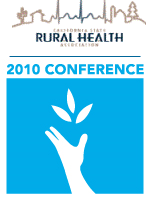Data Questions: Data for Rural Communities
 This week, we’ll be showing kidsdata.org at the California Rural Health Conference in Sacramento.
This week, we’ll be showing kidsdata.org at the California Rural Health Conference in Sacramento.
When visiting rural communities, we often get questions about why so little data are available. In this installment of Data Questions, we’ll address this issue:
“I live in a rural county — why does kidsdata sometimes show LNE instead of data for my region?”
LNE stands for Low Number Event. LNE is defined differently depending on the data source, but is shown when the numbers are too small to report. Showing LNEs helps us maintain statistical integrity and, in some cases, it helps ensure the anonymity of the children reporting the data. Whenever you see an LNE in a graph or chart, its definition is explained in the “footnote” below the data. On maps, regions with LNEs appear as white.
We know that in many cases, rural communities with small populations of children need to gather the same data as urban communities, but are burdened with a smaller pool of data available. We try to address that need in several ways. In some cases, we aggregate data across several years. In other cases, we offer data for regions made up of several counties with small populations. When possible, we aim to offer numbers alongside rates and percentages, so that even if there are not enough English Learners in a school district to report a reliable percentage, we can offer the number of English Learners.
A quick way to find out what data are available for your region is to go to the Data by Region page, select your region, and then click “View all data” at the top of the page.
Posted by Sarah Marxer and Felicity Simmons
This entry was posted on Wednesday, November 10th, 2010 at 3:55 pm. You can follow any responses to this entry through the RSS 2.0 feed. You can leave a response, or trackback from your own site.


